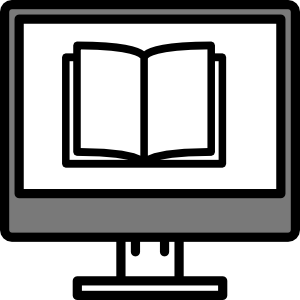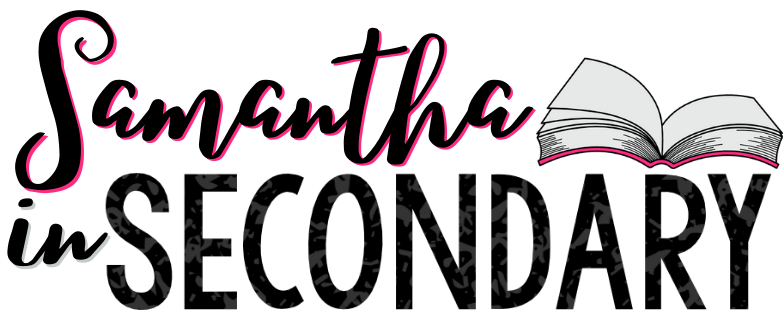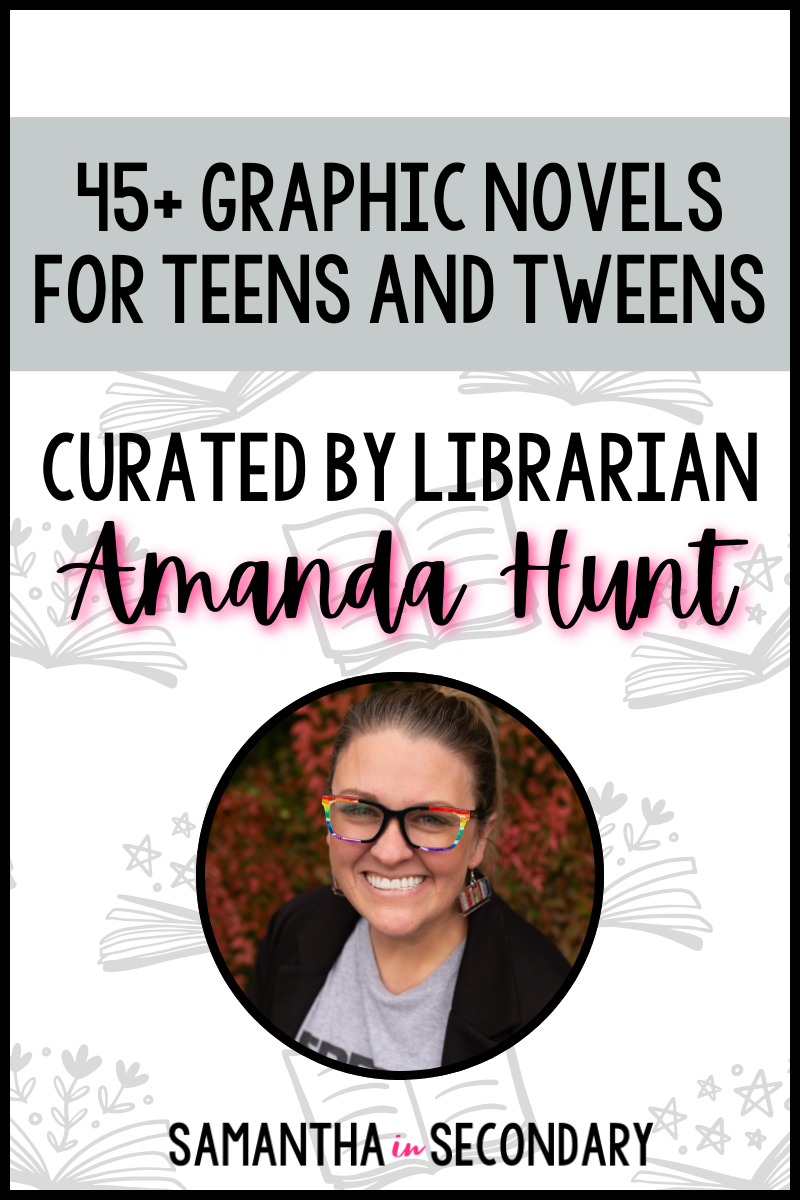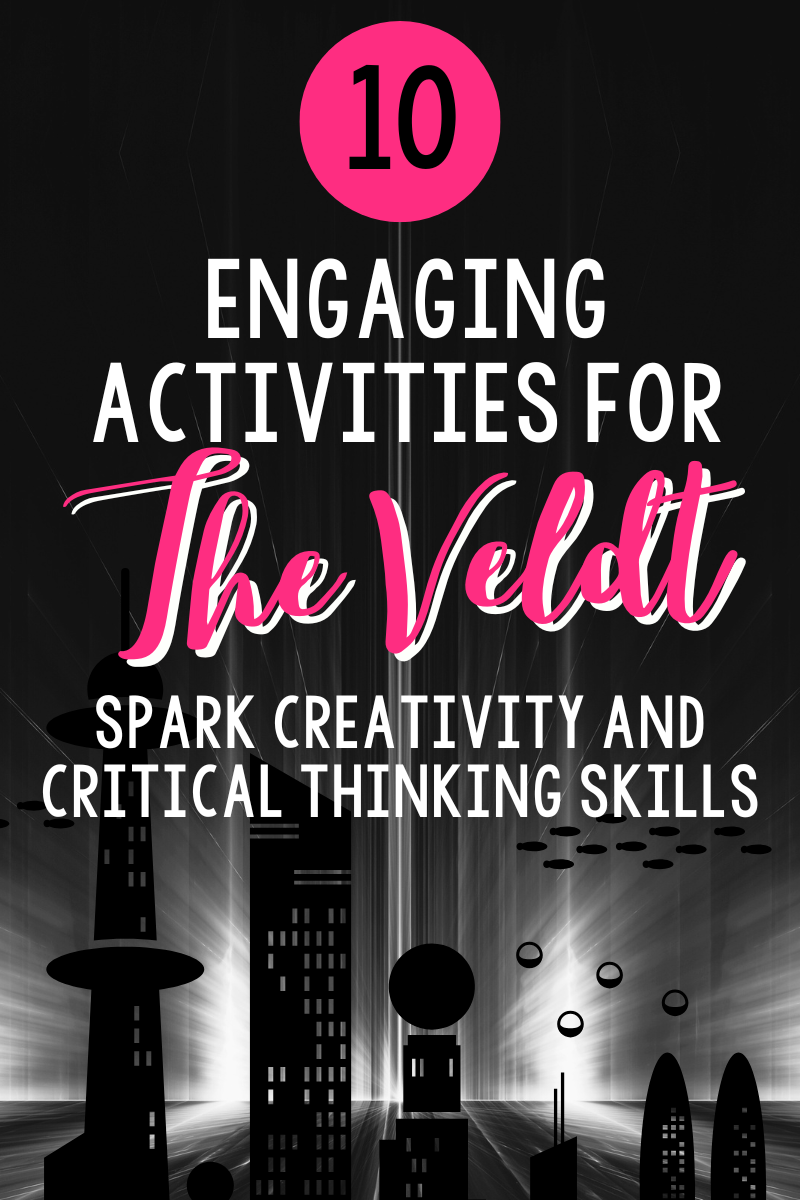Running a realistic fiction for young adults unit for secondary students can be both rewarding and impactful, as this genre allows students to explore stories and characters that feel authentic and relatable to their lives. Before diving into the specifics, it’s worth noting that the terms “realistic fiction” and “contemporary” are often used interchangeably. While “realistic fiction” is more commonly used in elementary and middle schools, the publishing industry typically refers to this genre as “contemporary.” To help students align with what they’ll encounter in the real world, I use the term “contemporary” throughout the unit. However, I’ll use both terms here to ensure clarity for teachers searching for ideas.
In this unit, students will engage with contemporary literature in exciting and meaningful ways. You’ll kick things off with a genre introduction and activities that build excitement and understanding. Then, let students select their books through a fun book speed dating activity, helping them find titles that resonate with their interests. As they read, students will use a discussion guide to scaffold their thinking and participate in rich, meaningful conversations about their books. To deepen their understanding, you’ll refresh their knowledge of theme and guide them through a unique assessment: a thematic playlist. This creative project invites students to choose songs that reflect the themes of their novels, blending critical thinking with creativity.
Ready to dive into this unit? Let’s break down each step to ensure your students have a memorable and engaging experience with realistic fiction.
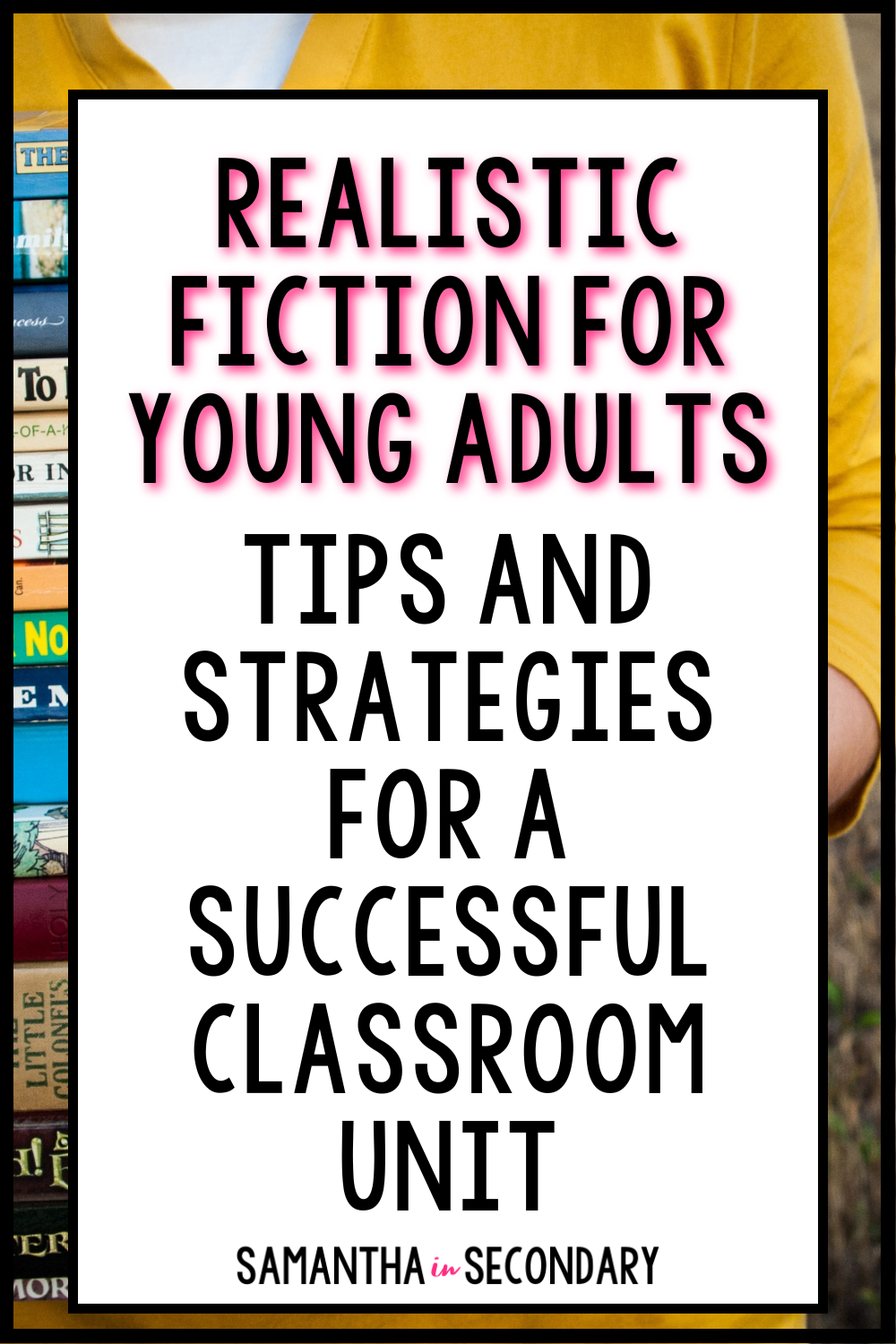
Introduce the Realistic Fiction for Young Adults Unit
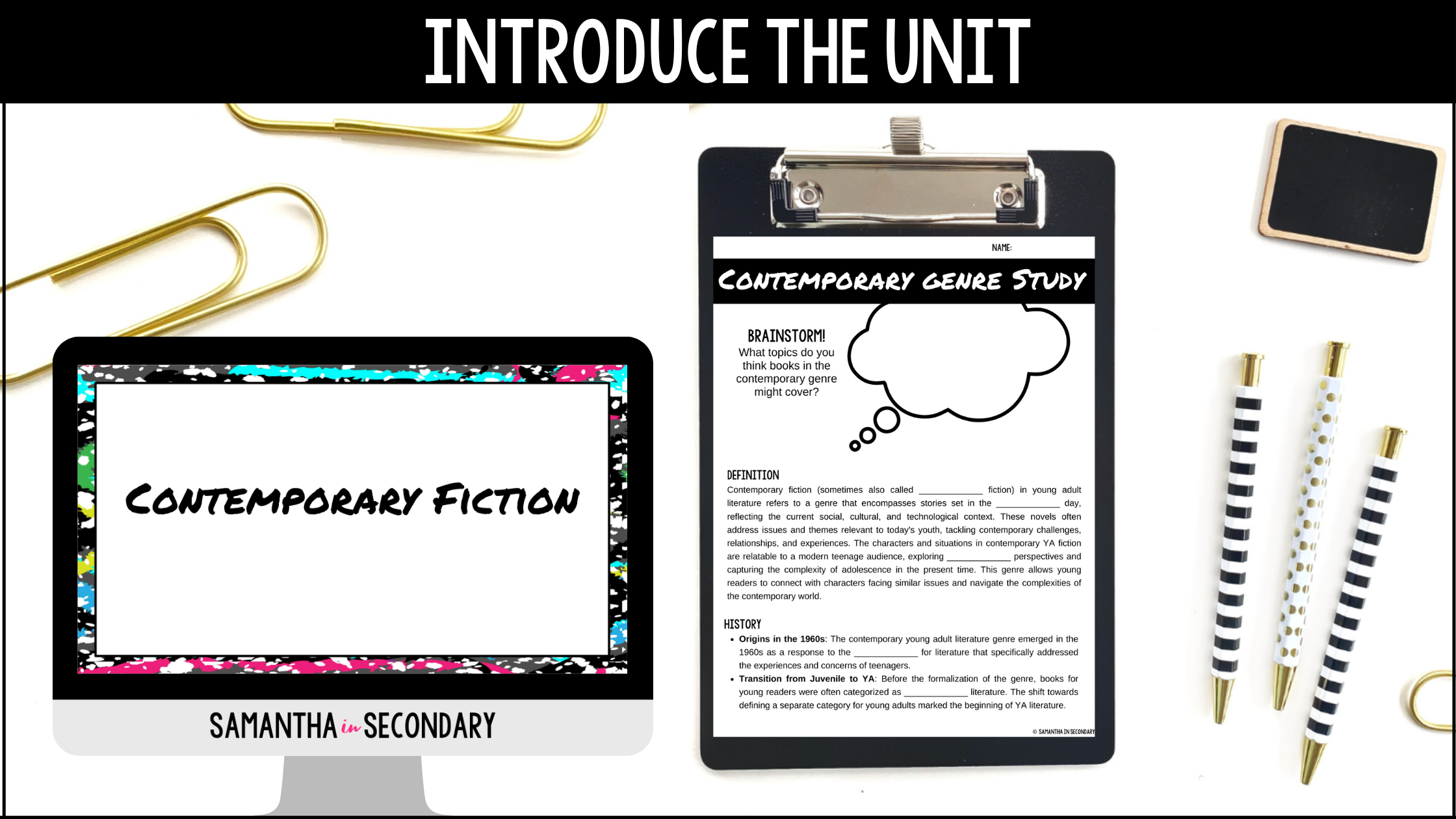
Starting your realistic fiction for young adults unit with a solid understanding of the genre will set the stage for meaningful exploration and engagement. Begin by going over the basics of realistic fiction, which includes stories set in the real world with characters and events that could actually happen. Discuss how the genre often focuses on relatable themes such as family, friendships, identity, and overcoming challenges, making it particularly resonant for young adult readers. Provide students with a brief overview of these elements and ask them to take notes to refer back to throughout the unit.
Once the genre basics are established, reinforce students’ understanding with an interactive activity. One option is to present a mix of short story summaries or book blurbs, some from realistic fiction and others from different genres like fantasy or science fiction. Have students work in pairs or small groups to identify which belong to realistic fiction for young adults and explain their reasoning. This activity not only reinforces genre characteristics but also fosters collaboration and critical thinking.
By starting with genre basics and engaging students in an interactive exercise, you’ll give them the tools to recognize and appreciate the unique qualities of realistic fiction as they dive into their books. Want to see my contemporary genre introduction resource? Click here!
Choose Titles with Book Speed Dating
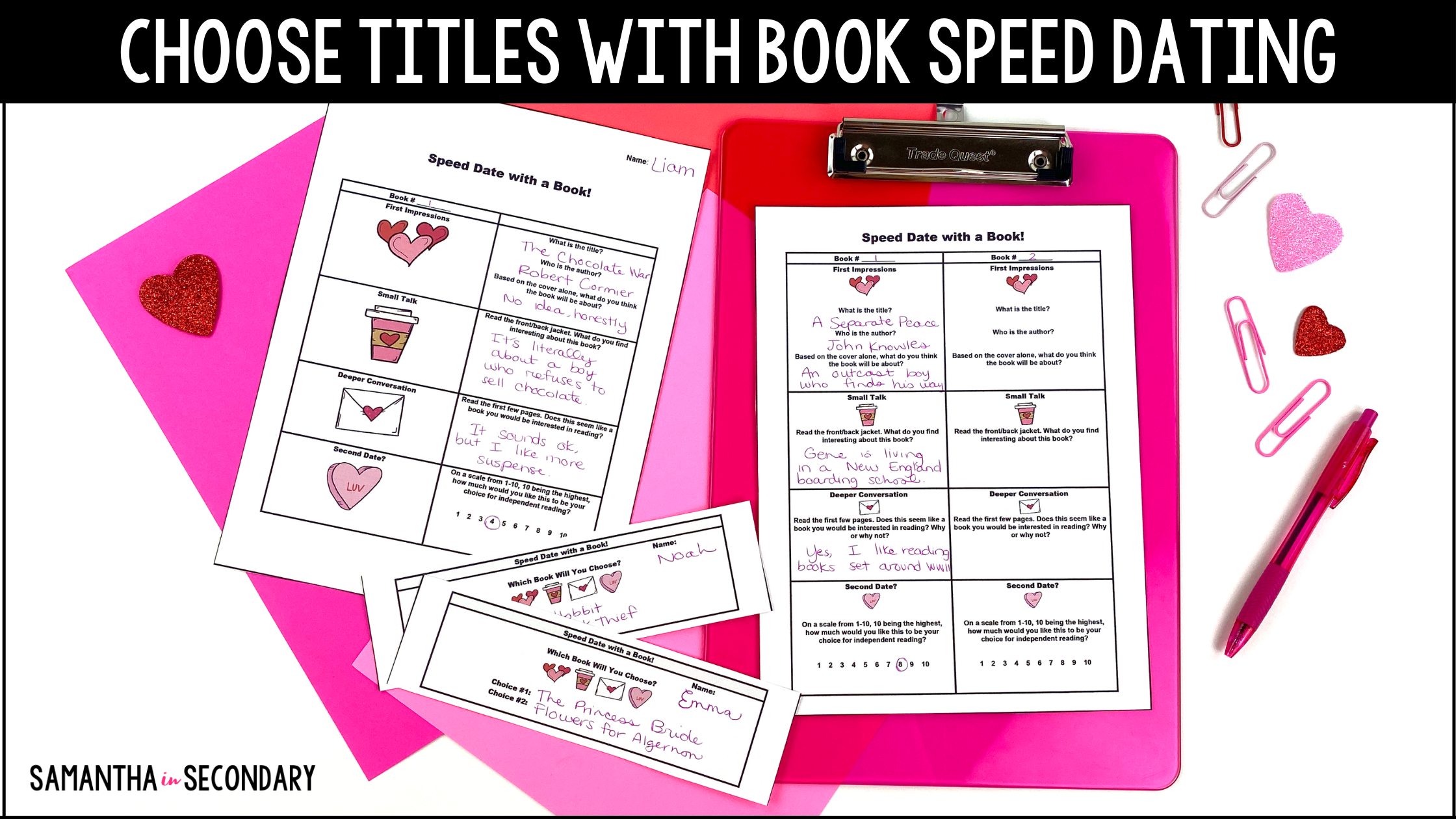
Selecting the right books is key to a successful realistic fiction for young adults unit, and a book speed-dating activity is the perfect way to get students excited about their options. Start by curating a collection of contemporary YA titles that reflect the themes and diversity within the genre. Include a range of topics such as family dynamics, identity, mental health, friendships, and personal growth, ensuring there’s something for every student to connect with.
To introduce the activity, briefly review the characteristics of realistic fiction for young adults and remind students of its focus on believable characters, real-world settings, and relatable themes. Encourage them to think about what kinds of stories they personally enjoy and what issues or experiences they’d like to explore in their reading. Have them jot down notes on what appeals to them, which will guide their choices during the activity.
For the book speed-dating portion, set up stations with a variety of realistic fiction books. At each station, include a book, its synopsis, and a short excerpt. Give students a few minutes at each station to read the synopsis, skim the excerpt, and jot down their initial impressions. Rotate the students until they’ve visited all the stations or enough to form a solid opinion. Finally, have them select their top three choices and turn in their preferences. This not only gives students agency in their reading but also introduces them to the variety and depth of contemporary YA literature.
By using book speed dating, you make the process of choosing a book fun, interactive, and meaningful, ensuring every student finds a title that resonates with them and sets the stage for a successful realistic fiction for young adults unit.
Explain and Model Discussion Expectations
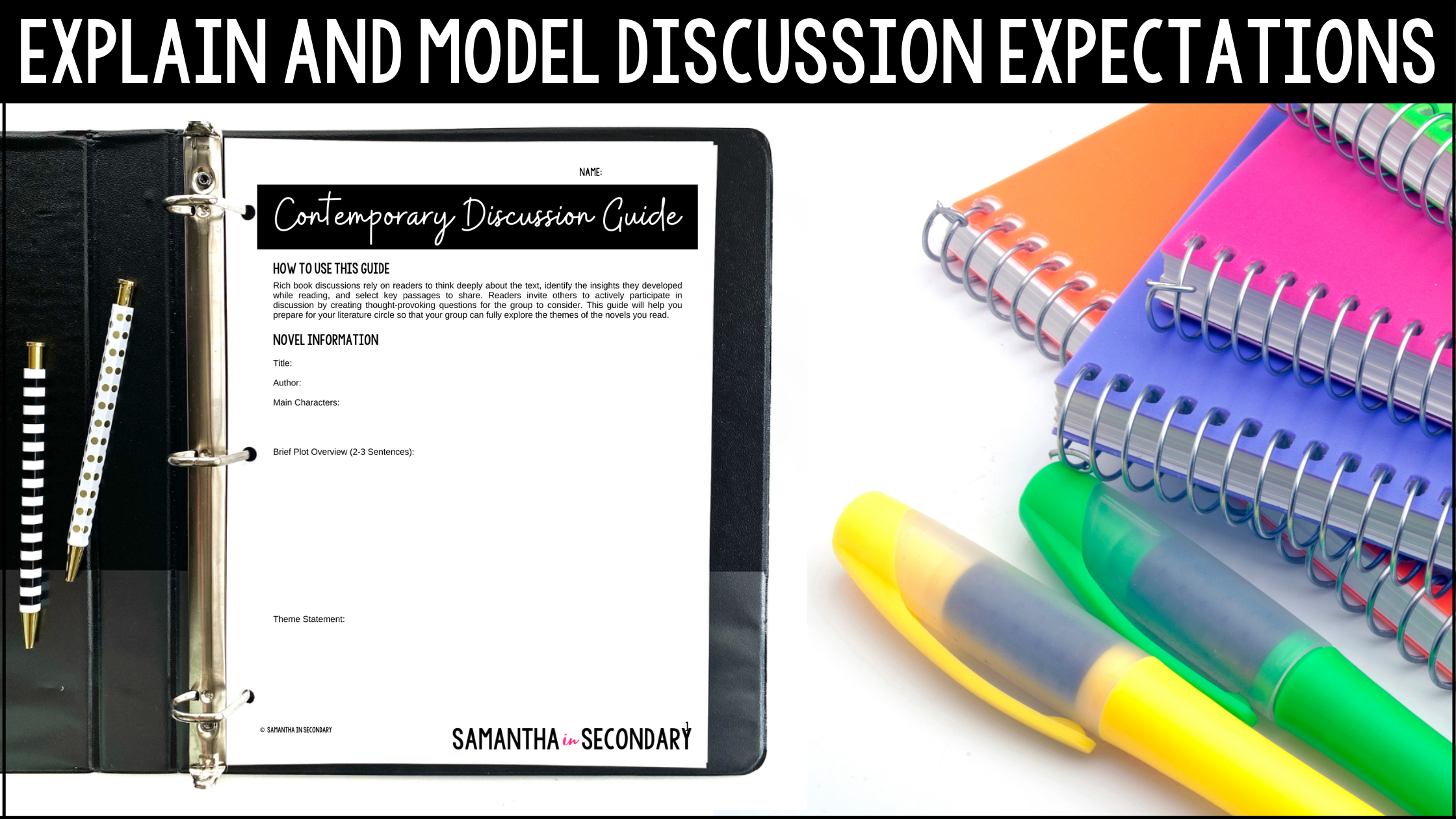
A well-structured discussion guide is essential for fostering meaningful conversations in your realistic fiction for young adults unit. This type of scaffold helps students gather information before entering into an academic conversation. It helps them feel more confident in their thoughts and ideas. You’ll want to create a guide of your own or click here to grab mine.
To ensure students are prepared, start by explaining the purpose of the guide: to help them think deeply about their book, select meaningful passages, craft thought-provoking questions, and reflect on key themes and takeaways. Use examples from a book you’ve read to model how to complete each section, such as identifying key passages or developing open-ended questions tied to the text.
Begin by reviewing each component of the guide: the novel information section, key passages, open-ended questions, and key takeaways. These are the sections I like to include, but you can create the guide to best suit the needs of your students. Demonstrate how to thoughtfully choose passages that provide substance for group discussions, like those with strong themes, pivotal moments, or striking language. Explain how to craft open-ended questions that encourage dialogue rather than simple yes-or-no answers, and tie these questions to the book’s themes or characters. Highlight the importance of connecting the story to broader ideas or real-world issues, which is especially relevant in realistic fiction for young adults.
To reinforce understanding, engage students in an interactive activity. Provide them with a short excerpt from a realistic fiction novel and work through part of the discussion guide as a class. For example, identify a key passage together, discuss why it’s significant, and brainstorm an open-ended question related to it. This collaborative modeling will help students feel more confident completing their guides independently.
By taking time to explain and model the discussion guide, you’ll give students the tools they need to engage in rich, thoughtful discussions that deepen their understanding of realistic fiction for young adults and its connection to the world around them.
Refresh Students’ Knowledge of Theme
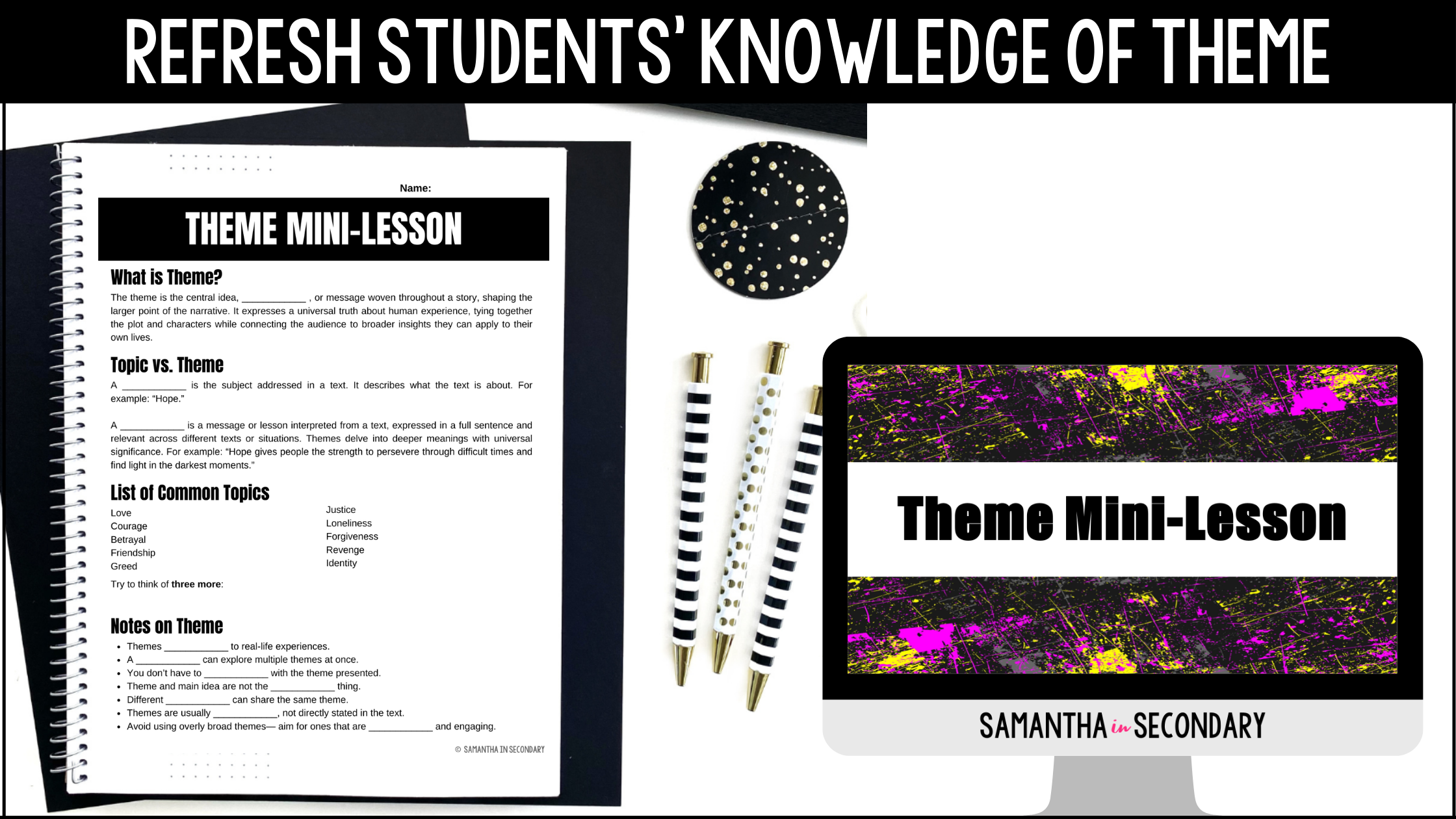
One of the defining features of realistic fiction for young adults is its ability to explore relatable and impactful themes that resonate with readers. Themes like identity, friendship, mental health, family dynamics, resilience, and social justice are central to many books in this genre, making them ideal for sparking meaningful discussions in the classroom. Before diving into their novels, take some time to refresh your students’ understanding of what a theme is and how to identify it within a text.
Start by explaining that a theme is the underlying message or big idea the author wants readers to take away. Unlike the plot, which focuses on what happens in the story, the theme explores why it matters. Use examples from popular realistic fiction for young adults titles to illustrate this distinction. For instance, in The Hate U Give by Angie Thomas, the theme of social justice is woven through Starr’s journey as she grapples with speaking out against police brutality. Similarly, in Eleanor & Park by Rainbow Rowell, themes of love, acceptance, and family struggles shine through the characters’ relationships and personal growth.
To help students practice identifying themes, provide a short excerpt from a realistic fiction novel and guide them in discussing its deeper messages. Ask open-ended questions such as: What is the author trying to say about life or society? How do the characters’ experiences reflect universal truths? Encourage them to make connections to their own lives, their peers’ experiences, or current events, which makes the theme more tangible and relatable.
By emphasizing the thematic depth of realistic fiction for young adults and giving students tools to analyze these elements, you’re setting the stage for thoughtful engagement with the texts they’ll read during the unit. If you want a done-for-you resource to refresh theme with your students, check out my Theme Mini-Lesson right here.
Assess Understanding with a Creative Project
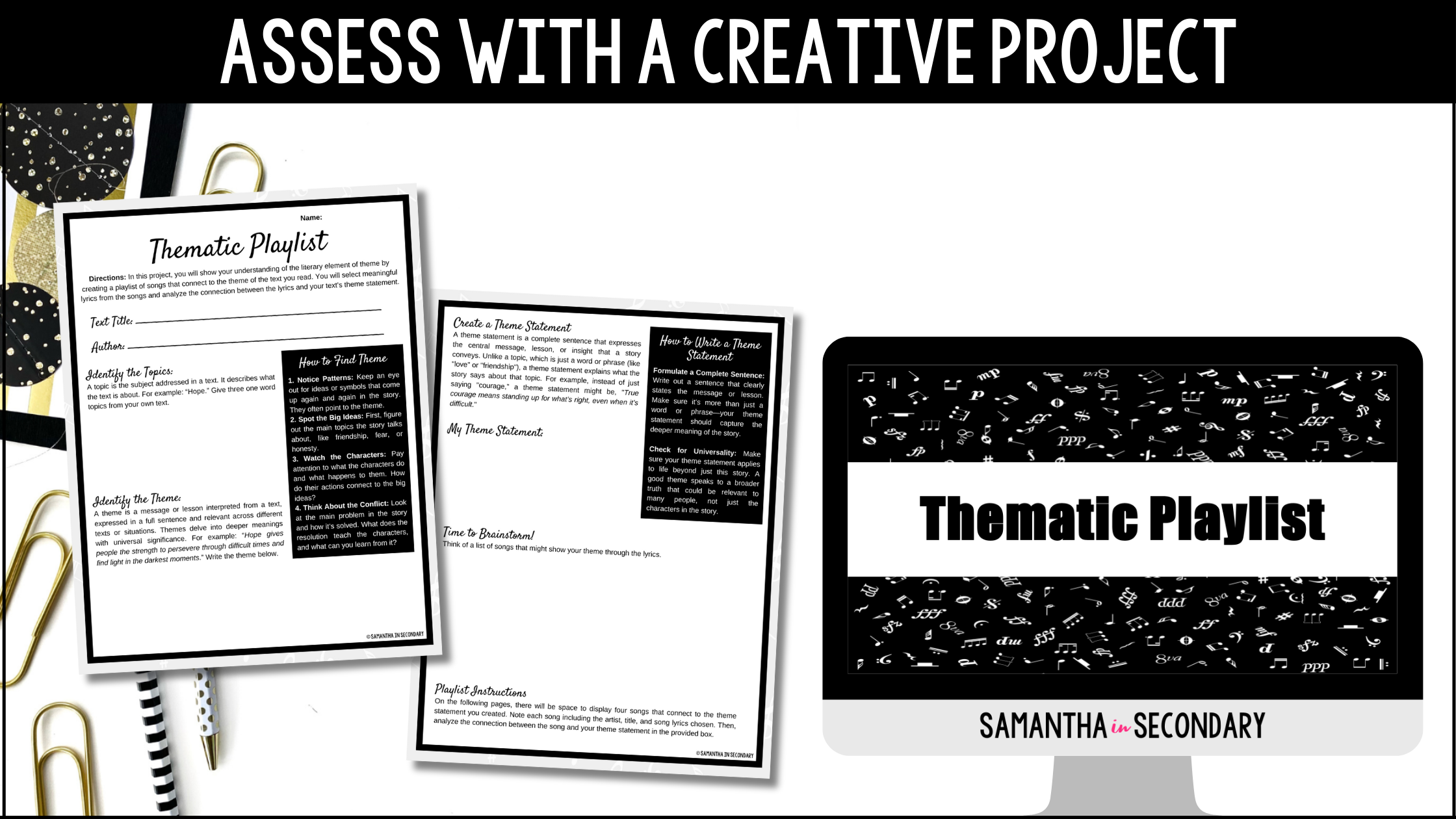
Assessing students’ understanding of realistic fiction for young adults can be both meaningful and engaging with a creative project like a Thematic Playlist. This project invites students to delve deeper into the themes of their chosen novels by connecting them to modern music, allowing them to demonstrate comprehension while tapping into their creativity.
In this project, students identify the central theme of their novel and curate a playlist of songs that align with the book’s message. Each song must include meaningful lyrics that reflect the theme, and students analyze how the lyrics enhance their understanding of the text. For example, a student reading a book centered on resilience, like The Hate U Give by Angie Thomas, might include “Fight Song” by Rachel Platten, explaining how its lyrics emphasize inner strength and overcoming adversity.
Guide students through the process step by step. Start by helping them refine their theme statements based on their novels. Then, demonstrate how to select songs with lyrics that meaningfully connect to their themes. For each song, they should include an explanation that cites both the book and the lyrics as evidence, showing the parallels between the two. To make the project more interactive, encourage students to present their playlists to the class or share them digitally, complete with a brief discussion of their thematic connections.
A Thematic Playlist project is an excellent way to assess students’ critical thinking and analytical skills while allowing them to express their personal interpretations of realistic fiction for young adults. It not only reinforces their understanding of theme but also connects literature to their own experiences and interests, making the learning experience both fun and impactful. Want to grab the project I used in my own classroom? Click here to check it out.
Prefer a Done-For-You Unit?
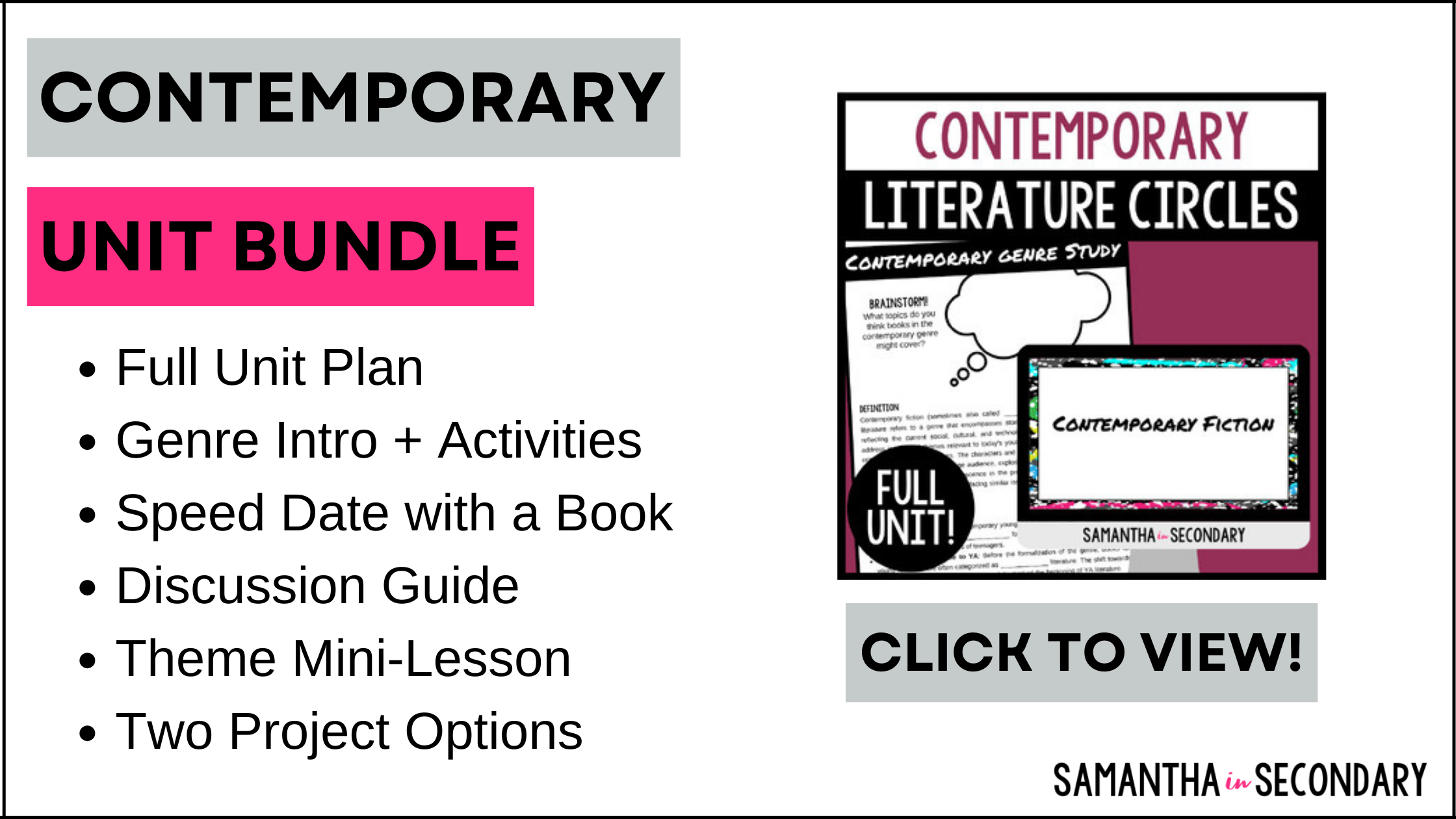
If you’re excited to bring realistic fiction for young adults to life in your classroom but feel pressed for time, I’ve got you covered! My Contemporary Literature Circles Unit is a done-for-you resource designed to help you foster a love of reading while promoting critical thinking and collaboration. You’ll find all of the activities you read about in this blog in one easy-to-implement unit. Not only does this resource save you hours of prep time, but it also provides your students with meaningful opportunities to connect with compelling stories and explore themes that matter. Click here to check it out.
Want to learn more about my approach to this unit? You can listen to Episode 20: Contemporary YA: Teaching the Stories That Matter to Teens of my podcast, Creating Joyful Readers, to listen to my approach. You can then listen to Episode 21: Fresh and Relatable: Contemporary YA Authors You Can’t Miss to hear all about the authors that top my list of contemporary writers. Find the books your students will really want to read in that episode.
Incorporating a realistic fiction for young adults unit into your secondary ELA classroom is an excellent way to engage students with stories that feel authentic and relatable. From introducing the genre and selecting captivating books to facilitating thoughtful discussions and completing creative assessments, each step helps students connect with literature on a deeper level. By exploring themes that resonate with their own lives, your students will not only develop their critical thinking skills but also foster a lifelong appreciation for reading. With the strategies outlined in this blog, you’re well-equipped to make your unit both meaningful and memorable.
Happy teaching!



